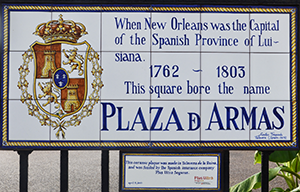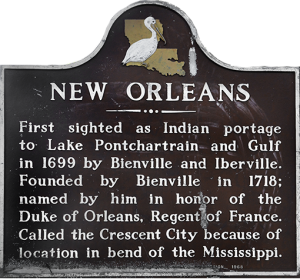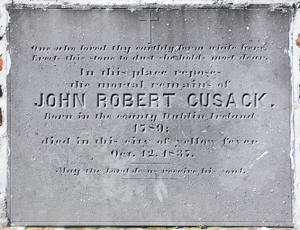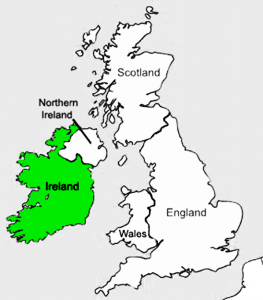Pages
Timeline Of Events : French Spanish Irish : Cajun Creole Africans : Native Tribes : Americans : New Orleans : Mardi Gras : Music : Streetcars : Slavery Antebellum Emancipation : Crime : Carlos Marcello : Mafia : Huey P Long : Jean Lafitte : Marie Laveau : Stanley 'Tookie' Williams : Louis Armstrong : Jim Bowie : Jerry Lee Lewis : Lee Harvey Oswald : Huey P Newton : KKK Jim Crow : Politics Religion : Arts Architecture Movies : The Mississippi : Ecology Weather : The Land : Flora and Forna : Mammals Birds Reptiles Aquatic Bugs
The Spanish
 The Spanish explorer Henando Desoto discovered the Mississippi in 1541 and claimed the entire surrounding territory for Spain.
The Spanish explorer Henando Desoto discovered the Mississippi in 1541 and claimed the entire surrounding territory for Spain.
They were the first non-native settlers in this area and as with every land that they conquered, they pursued the quest for gold. Alas, the new territory was fruitless and their enthusiasm soon drained.
The French explorer René-Robert Cavelier, Sieur de La Salle arrived at the Gulf of Mexico on April 9th 1682 and claimed the territory for France.
Through a peace treaty in 1762, France ceded the territory back to Spain and the Spanish ruled until 1800.
During this period the population increased by 20,000, of which, around 8,500 were slaves.
The new Spanish Governor Alejandro O'Reilly, declared enslavement of Native Americans in order to prevent fighting between tribes as one tribe would raid another for slaves to sell on the open market.
This period was one of growth and stability.
After the Great New Orleans Fires of 1788 and 1794, most of the city was rebuilt in the Spanish style. The French Quarter buildings with overhanging balconies and the iconic St Louis Cathedral are of Spanish influence.
It was during the Spanish colonial control that the first Irish immigrants arrived and the first generation born in the colony were referred to as Criolla, later to become Creole.
After the treaty of San Ildefonso on October 1, 1800, the territory transferred back to France.
The French
French explorer René-Robert Cavelier, Sieur de La Salle arrived sat the Gulf of Mexico on April 9th 1682, having traveled down the Mississippi River, naming the territory Louisiana after King Louis XlV of France. A seasoned explorer, La Sallle set out again from France in 1678, eventually meeting his death in Texas in 1687.
Mississippi River, naming the territory Louisiana after King Louis XlV of France. A seasoned explorer, La Sallle set out again from France in 1678, eventually meeting his death in Texas in 1687.
Jean-Baptiste Le Moyne,Sieur de Iberville founded New Orleans in 1718 and a year later the first ship of African slaves arrived.
Mobile was established as the first capitol in 1702, transferring the title to Biloxi in 1720, then to New Orleans in 1723.
In 1756 France and Britain commenced the Seven Year's War, prior to that, the French settlers in Acadian (Canada) were under pressure from the English to renounce Roman Catholicism, igniting the start of the exodus from Acadia.
 In 1762 the French relinquished government and signed Western Louisiana over to Spain and the Eastern section to England. A year later the French ceded Canada to the English, hastening the movement of Acadian (Cajun) refugees.
In 1762 the French relinquished government and signed Western Louisiana over to Spain and the Eastern section to England. A year later the French ceded Canada to the English, hastening the movement of Acadian (Cajun) refugees.
During the American Revolutionary War (1775–1783), French settlers fought against the British, alongside the Louisiana militia.
Back in France they had a Revolution of their own brewing, with the advent of riots and civil unrest from 1792 through to the executions of King Louis XVI on January 21, 1793 and Marie Antoinette on October 16.
In 1800, after the revolution in France and under the rule of the First Consul, Napoleon Bonaparte, France won the territory back from Spain, building up troops in readiness for an assault on St Domingue and New Orleans. However, with his troops dying of yellow fever and the fight with England draining his resources, Napoleon sold Louisiana to the United States in 1803 for $15,000,000.
The Louisiana Purchase of 1803 added 828,000 square miles (2,144,000 square kilometers to the existing United States.
The Irish
Many of the early Irish immigrants settled in New Orleans, especially during the Spanish colonial period (1763–1800).
 The Catholic predominance in Louisiana was particularly inviting and they found plenty of employment opportunities in the traditional building and construction trades. They contributed their skilled labor (and often their lives) to the canal and railroad infrastructure of Louisiana. Many of the early arrivals were educated middle class and found employment as lawyers, doctors and other sought after professions.
The Catholic predominance in Louisiana was particularly inviting and they found plenty of employment opportunities in the traditional building and construction trades. They contributed their skilled labor (and often their lives) to the canal and railroad infrastructure of Louisiana. Many of the early arrivals were educated middle class and found employment as lawyers, doctors and other sought after professions.
Once established, the Irish tended to support one another in close communities and sticking together as a union of workers ensured their own livelihood by keeping out other laborers within the construction industry. They made sure that vacant positions were filled by other Irishmen and organized what was effectively, the first labor strike while building the New Basin Canal.
Irish women worked hard and supported their families along with the men. One of these illiterate immigrants was Margaret Haughery, an exceptional woman who worked selflessly in New Orleans to help feed the poor and the city's orphans. At the time of her death she was one of the most respected and wealthiest women in New Orleans.
 With much of the workforce employed in constructing roads, railways and canals in the swamp areas, they had more than their share of yellow fever epidemics and thousands of lives were lost to this disease.
With much of the workforce employed in constructing roads, railways and canals in the swamp areas, they had more than their share of yellow fever epidemics and thousands of lives were lost to this disease.
With the Roman Catholic religion already established in the area, they had far greater freedom than in their homeland to practice their faith.
Their politics generally veered towards the Democratic party and as the Civil War became a reality, they supported secession, purely because they feared free blacks would flood the labor market, jeopardizing their livelihood. Until then, Irish laborers were paid a meager wage for tasks considered too dangerous for slaves.
After the war they played a vital part in the reconstruction of Louisiana.
